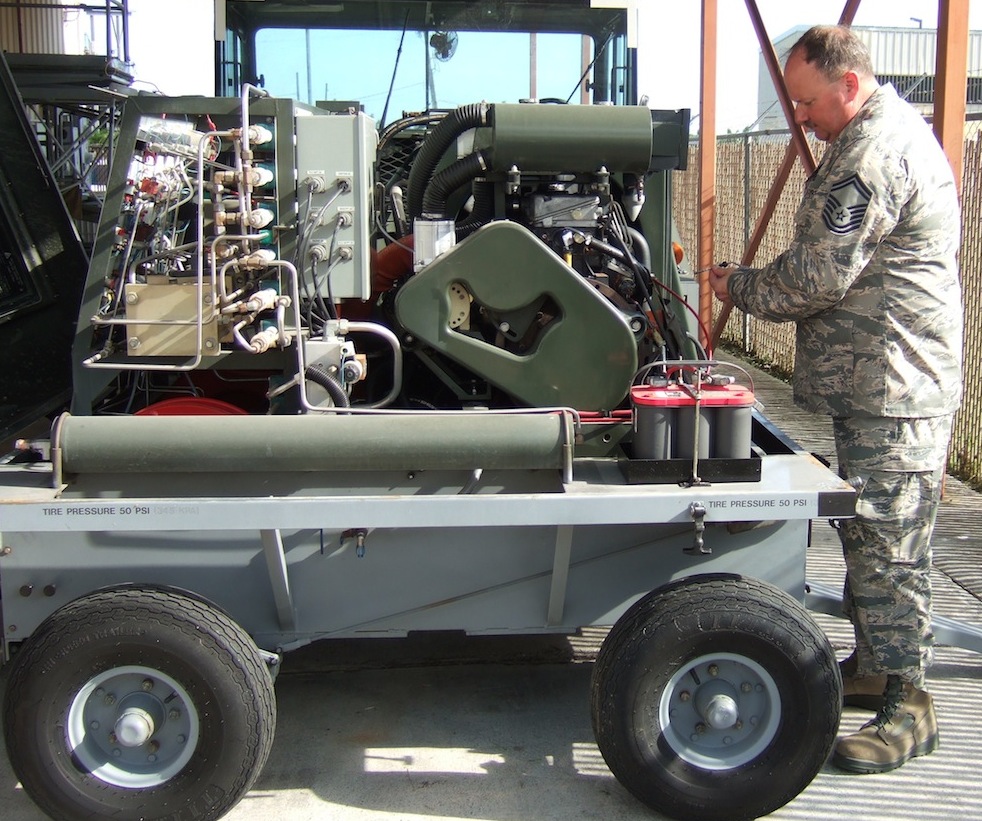
The 53rd Weather Reconnaissance Squadron has made two deliveries this week consisting of parts, equipment and supplies from Keesler Air Force Base, Mississippi, in a giant multi-million dollar WC-130J.
Lt. Col. Roy Deatherage estimated two more trips will be needed to transport everything needed to complete their mission once a storm rages across the Atlantic within 700 miles of land – about two and a half hours east of St. Croix.
The Hurricane Hunters take to the air when called by the National Hurricane Center and fly into storms until the severe weather makes landfall or is no longer a threat. The crew will fly as far west at Hawaii when necessary.
Deatherage, who has been with the weather squadron a quarter of a century, said 20 percent fewer storms are predicted this summer than last year, when the territory was unscathed. Nine named storms are expected this year, six hurricanes and one major hurricane, according to the Colorado State University’s Dr. William Gray. The Weather Channel predicts 11 named storms, five hurricanes and two major hurricanes, which is still a below-average number of storms.
The Atlantic basin is cooler, said Deatherage, a meteorologist. And El Niño is expected to blow into the Atlantic, creating wind sheer, which also impedes storm formation, he added.
“It only takes one, but if it’s only one, it’s usually okay.”
When the WE-130J is ordered to investigate a storm, there is a flight crew of five to seven people including trainees. The average flight is 10 hours long, Deatherage said, and the plane crosses the eye of the storm four times at different altitudes, roughly a 100-mile radius. Instruments measure wind speed and barometric pressure to determine the storm strength.
The Hurricane Hunters call flying into severe weather an “invest,” which they do to provide data to forecasters who can predict how strong the storm will be and where it will track. Knowing where the storm will make landfall can save lives and millions of dollars by pinpointing evacuation areas.
The WC-130J aircraft can fly 10 to 13 hours without refueling, depending on the altitude. The lower the plane flies, the more fuel it consumes.
There are other problems flying at low altitudes – birds. According to Senior Master Sgt. Jim Curtis, bird strikes are responsible for most of the repairs to the aircraft.
To be prepared for anything, spare parts, special tools, a spare propeller and other equipment are being delivered to St. Croix this week. Setting up the base at the Henry B. Rohlsen Airport will take four trips this year, with a full cargo hold each time to transport several generators to power the plane, a 10-ton vehicle to tow it onto the tarmac, a nitrogen cart and other specialized equipment.
The nitrogen cart filters nitrogen from the air to fill the tires for the huge aircraft. Nitrogen prevents corrosion, Curtis said, keeps the tires cooler and ice from forming at high altitudes. The tires not only support the airborne monster, they rotate from zero to 180 miles per hour, Curtis said.






